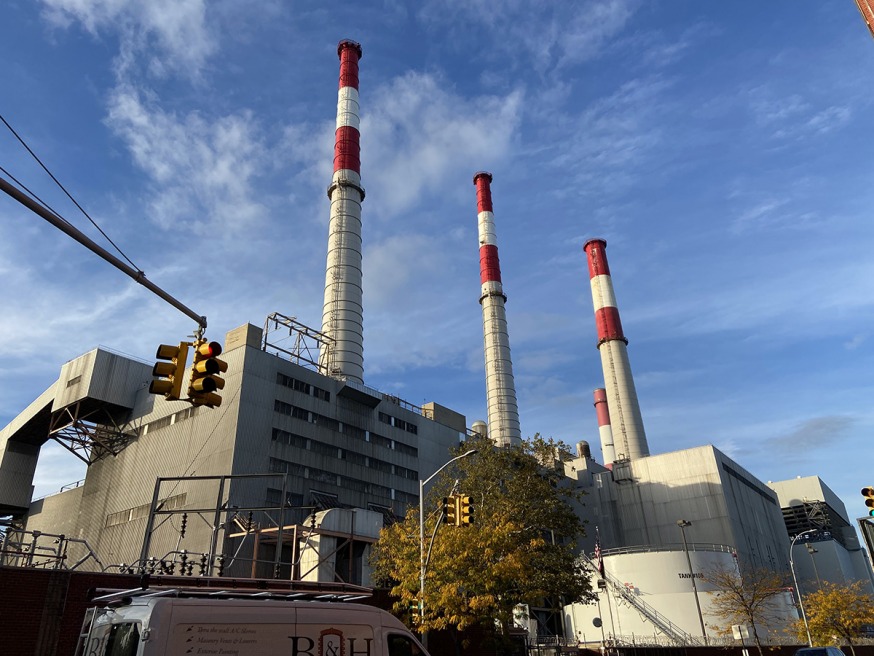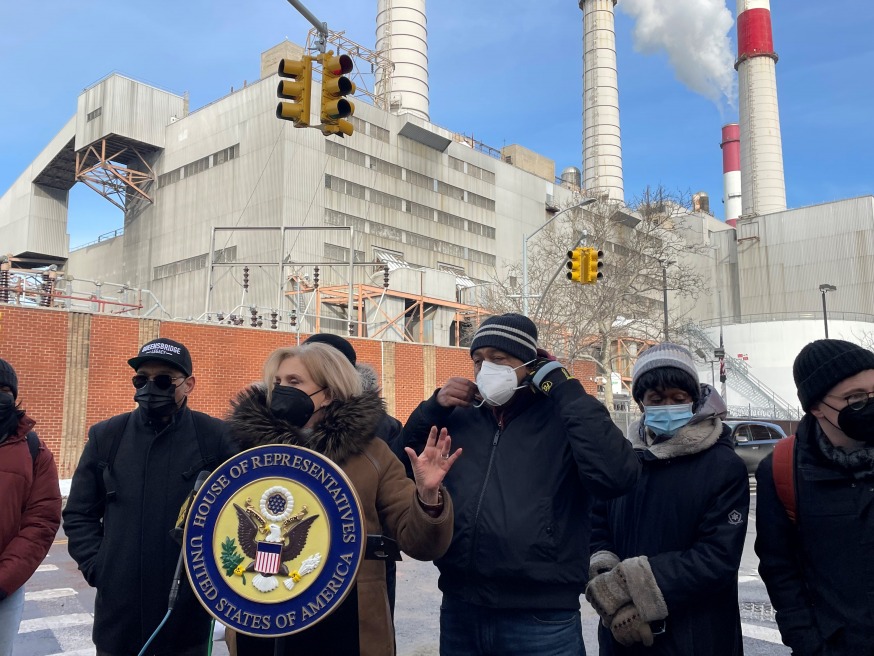
The Ravenswood Generating Station located at 38-54 Vernon Blvd. in Long Island City (Photo: Queens Post)
July 14, 2022 By Christian Murray
The Ravenswood Generating Station that has been belching toxic pollutants along the Long Island City waterfront for decades may soon be transformed into a clean energy hub, the company that operates the facility announced Tuesday.
Rise Light & Power, which is owned by the New York company LS Power Group, plans to retire its existing generators and turn the 27-acre site located north of the Queensboro Bridge into a renewable energy hub.
The company plans to generate power through clean energy sources, including offshore wind, wind from upstate New York, and solar power.
The power would be fed directly into New York City’s electric grid in a coordinated, planned, and reliable manner. The plan also involves the creation of a large-scale battery storage facility on the site to balance the intermittent nature of renewables.
Rise Light & Power, which took control of the plant in 2017, currently has four main generators at the Ravenswood station, with Big Allis– the largest and most well-known of the generators—producing about half the power. All four generators, which will be retired under the plan, are powered by natural gas, although oil is used as a backup when the system is stretched during peak demand.
The plan is being referred to as “Renewable Ravenswood,” and it aims to help the state meet the clean energy requirements set by the 2019 NYS Climate Leadership and Community Protection Act. The law requires the state to supply 70 percent of its electricity from renewable sources by 2030—and 100 percent by 2040.
“New York City has for too long relied almost exclusively on fossil fuels to power the city,” said Clint Plummer, Chief Executive Officer of Rise Light & Power. “Our future demands innovative and reliable clean energy solutions, and we will deliver just that with our bold move to retire Ravenswood’s 1960s-era fossil fuel units and transition to a Renewable Ravenswood in its place.”
The plan to overhaul the facility requires local, state and federal regulatory approval. If all goes well it could be completed by the end of the decade.
The transition is also about environmental justice since the pollution from the current site is located by several NYCHA developments.
The massive plant is located across the street from Queensbridge Houses, the largest NYCHA development in North America with 3,142 apartments. It is also near Ravenswood Houses, a NYCHA complex that includes 2,167 units, and Astoria Houses, a NYCHA development with 1,102 apartments.
Ravenswood is one of several power plants located along the Astoria/Long Island City waterfront, which has led to elevated pollution levels hence its nickname “Asthma Alley.”
Rise Light & Power said that it developed the plans in coordination with local environmental justice leaders and local New York City Housing Authority housing developments.
The company said the plan also aims to project jobs and it will ensure current workers are retrained in order to work at the renewable facility.
If approved by regulators, the revamped facility would power more than 2 million New York homes with renewable energy, in addition to providing clean heating and cooling for up to 15,000 local residences.
The company plans to file the first of many formal plans and detailed applications with state energy regulators and authorities later this year.
Rise & Shine said that its preliminary plan has received the backing of local politicians including Congressmembers Carolyn Maloney and Gregory Meeks, state Sen. Michael Gianaris, Queens Borough President Donovan Richards and Council Member James Gennaro, who is Chair of the NYC Council’s Committee on Environmental Protection.
“I applaud Rise Light & Power for taking steps to transition Big Allis and Ravenswood to a clean energy hub,” said Maloney who has held numerous protests outside the facility to draw attention to pollution and its negative impact on the health of nearby residents.
“We are living through a climate emergency, and we need to take bold actions to counteract decades of environmental injustice and bad energy policy. A Renewable Ravenswood not only allows for the green powering of New York City, but it will also be a major step forward on environmental justice. The residents of my district have suffered through decades of pollution.”

Congresswoman Carolyn Maloney holds a press conference outside Big Allis in January to draw attention to the pollution and the need for environmental justice (Photo:@RepMaloney)
6 Comments

Means soaring bills, further souring bills, and more soaring bills. We have to pay higher and higher prices to save the democracy, right???
Come on. Do we really electricity. We can use candles at night, Wash chothes in the river, Walk to work etc.
Ironically enough, if we just relied on wind and sunny days alone that’s exactly where we’ll be. Green energy is a supplement, not a primary source of energy.
Renewable energy is getting to be as cheap as fossil fuel energy. Also, would you rather have no democracy or not planet?
‘and to the REPUBLIC for which it stands”. Human hubris that believes we have the power to destroy a planet is a marvel to behold.
Not the planet, humanity … and prob most of the animal kingdom that we know of